In a reef tank, the flow of water is essential for the corals and fish that are used to waves and currents in the oceans.

To provide you with adequate powerhead recommendations for your reef tank I will take into consideration your particular setup. This way you’ll be able to convincingly mimic the water flows of the ocean in your aquarium.
There are factors to consider as you choose the right unit for your reef setup. The type of saltwater fish you keep should come into play. A too-powerful aquarium powerhead may not favor a fish that is not comfortable in turbulent waters.
The dimensions and size of your aquarium also play a role in your choice. You’ll need considerably stronger aquarium powerheads for a 75-gallon fish tank than for a 40-gallon one, for example. Also, is there a good small unit that would best fit a nano fish tank?
The unit’s placement is also crucial. You’d want to place the powerhead in a position that enables it to maximize its efficiency.
Anyway, I first want to offer a list of pointers to help you with selecting the best powerheads that you can possibly get for your saltwater reef aquarium.
Let’s get to it straight away.
If you are in a hurry you can simply check the overview table with the reviewed products below:
| Powerhead Name | GPH Rating | Price Bracket |
|---|---|---|
| 1. Hydor Koralia Nano | 240 to 565 GPH | $$ |
| 2. Hydor Koralia Evolution | 550 to 1500 GPH | $$ |
| 3. SunSun JVP Series | 530 to 800 GPH | $ |
| 4. Jebao Cross Flow CP | 2700 to 7500 GPH with only one unit required | $$$ |
| 5. Uniclife W Series | up to 3400 GPH | $$ |
A Beginner’s Guide to Powerheads and Their Role in a Coral Reef Tank
Not every type of aquarium powerhead you lay your hands on would be fit for your fish tank. If you do not know what you want, then anything goes, and you could end up with the wrong product that turns your setup into a mess. That being said, here are the complete beginner guidelines, on choosing aquarium powerheads for a reef tank:
1. It Should Fit in and Not Spoil Aesthetics
The size of your fish tank should be able to accommodate your chosen powerhead. Here is what to consider when it comes to the powerhead’s size:
2. Choosing the Right GPH Rate
A powerhead’s power is measured by how many gallons of water it circulates in the aquarium per hour. This is measured in GPH which stands for Gallons per Hour and is sometimes called flow rate. In reef tanks, the GPH capacity of the powerheads depends on the type of coral you keep in combination with the aquarium’s size.
Here is what to look for when it comes to a powerhead’s pumping capacity:
For keeping LPS coral reef aquariums you’re looking at around 20 times of the total tank volume to be turned per hour. For an SPS-dominated reef tank, the hourly water turnover should go up to 40 times.
A quick example would be that if yours were a 55-gallon reef aquarium it would require powerheads with a total pumping capacity of between 1100 and 2200 GPH.
If you were to keep mainly LPS and soft corals in that tank then you’d need to aim for 1100 GPH with the powerheads because 55 x 20 = 1100.
If there were lots of SPS corals in that same 55-gallon tank then it would need an internal flow rate of 2200 GPH because 55 x 40 = 2200.
Here’s a reference table with the recommended powerhead GPH according to your tank’s capacity and the corals you keep:
| Tank Gallon Capacity: | Circulation for LPS setups (in GPH) | Circulation for SPS setups (in GPH) |
|---|---|---|
| 10-gallon tank | 200 | 400 |
| 20-gallon tank | 400 | 800 |
| 30-gallon tank | 600 | 1200 |
| 40-gallon tank | 800 | 1600 |
| 55-gallon tank | 1100 | 2200 |
| 75-gallon tank | 1500 | 3000 |
| 90-gallon tank | 1800 | 3600 |
| 125-gallon tank | 2500 | 5000 |
Another thing to know when choosing the GPH rating of the aquarium powerhead is flow rate distribution between multiple units.
If your fish tank requires a total of 2000 GPH, then it would be smart to actually buy 2 separate powerheads rated at 1000 GPH each.
This is because, it’s generally better to position 2 smaller powerheads at each end of the tank, in order to eliminate the possibility of stagnant water spots.
I have a separate section below specifically discussing powerhead placement, which will make things clear when you reach it.
By the way, a powerhead that pumps high-pressure jets of water is not necessarily powerful in that the high-pressure jets could not be worth many gallons per hour.
3. Additional Features That Provide Convenience
While any other powerhead can perform its water circulation duty, how each model is designed determines how efficient it can be.
Some come with special features or kits to enhance said efficiency.
New models with improvements keep coming up the more technology advances.
So here is what to look out for in features when buying a more efficient powerhead:
The strainer covers the intake route to keep your small tank pets from being sucked into the hole.
There are aquarium powerheads fitted with switches to adjust the water flow rate and speed. Still, more advanced ones are wireless and have remote control pads. With these, you can select different modes depending on what you aim to achieve at any given moment.
For instance, there is a feeding time mode, when the flow rate slows down for the fish to eat.
4. Heat Generation is Not To Be Overlooked
Excess heat in your tank could raise the water’s temperature, which in turn could affect the well-being of the most heat-sensitive of your reef aquarium inhabitants. So this is what you should also watch out for in a powerhead concerning heat emission:
This can be uncomfortable for your reef aquarium fish and corals.
Some marine fish are so sensitive that a slight increase in temperature is enough to alter their movements or slow them down.
On the other hand, note that a unit whose strainer holes are small can easily clog. The clog slows the water intake, forcing the device to overwork.
This leads to overheating too, so choose a powerhead with a large-hole strainer if the size of your aquarium fish allows it.
5. Durability and Build Quality for Long-Term Use
How long is your powerhead going to last? Here is what to check out in terms of quality and durability:
An aquarium powerhead is one product that operates under high pressure, literally in “unchartered waters”. It generates heat and pressure and is submerged most of the time. It should be sturdy enough to withstand its own vibration and the waves from other devices like the filter.
The material it is made of should, therefore, concern you.
The electric cords should be dependable, never wearing out soon.
You do not want stray electrical voltage to one day leak into the aquarium water and electro-shock your fish or even you, so the overall quality of the powerhead is crucial.
There have been cases of fish electrocution due to leaking voltage, to be honest.
See more about feeding your corals effectively in this comprehensive coral food guide.
6. Energy Efficiency on a Device That’s Constantly Working
Energy consumption is another factor you should not ignore. Here is what to consider when it comes to energy efficiency:
In my recommendations below, I made sure to only list top models, which usually include lower electricity consumption.
7. Ease of Maintenance
Here is what to consider when it comes to ease of installation and maintenance of an aquarium powerhead:
You should choose a powerhead that you can easily install by following the manual. The manual should be clear enough, with no ambiguities.
Taking it apart and assembling it should also be simple so that you can clean it and take it back whenever you do regular maintenance.
Talking of routine maintenance, for a powerhead, this should be once every two months to avoid clogging.
8. Noise Pollution
Powerheads are generally low-noise devices. The noise they make is insignificant, considering they are mostly submerged.
However, the unfortunate truth is some make the kind of noise you may not tolerate.
I speak from personal experience, by the way. When you have your fish tank in the sitting room, the sound could be bothersome if you end up with a noisy device.
So here is what you should consider when it comes to sound as you buy a powerhead:
You should ensure you acquire only the silent models if you are concerned about the noise.
Doing maintenance is also essential; without maintenance or cleaning, solid wastes soon clog the intake line, causing the device to make a choking sound.
What’s The Best Aquarium Powerhead For A Natural Reef Tank?
With all that said, I am going to review some units, so that you can choose the best one and be sure that your aquarium powerhead of choice satisfies the flow requirements of your corals.
I will only mention products that I like and I have used, or some reliable fellow aquarist I know has used and recommended to me.
That said, have a look at the 5 best aquarium powerheads for a reef tank:
1. Hydor Koralia Nano – Best for Small Reef Tanks
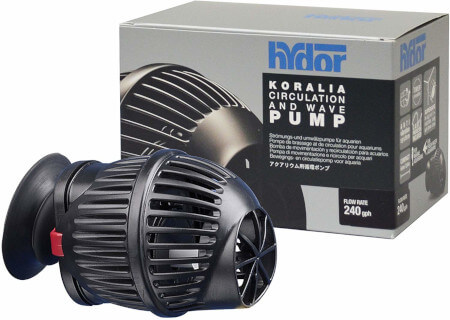
Click here to see the current price + more photos on Amazon.
One good thing I have to put in from the onset, with no strings attached, for the Hydor company is that should you at some point order a replacement part, they ship it to you for free.
Anyway, the Hydor Koralia Nano Aquarium Circulation Pump comes in different models so that you can choose the one that perfectly suits your fish tank’s gallon size and livestock.
They are all reliable, impressive, well-built, easy to use and it’s a breeze to position them.
The combination of durability and convenience is remarkable given the affordable price tag.
These units are arguably the best when it comes to providing flow in a nano aquarium as the smaller Hydor Koralia powerheads are specially designed for just that.
For positioning, they come with a magnet that you place on the outside of the fish tank to hold the suction cup securely in place.
This feature helps with placing the unit virtually anywhere on the aquarium’s glass.
The cords come with a protector just in case you have the kind of fish tank inhabitants that like to chew on whatever is in sight.
The impeller might look small, but it sure moves the waters around as if it’s turbo-charged.
One of the better features of this powerhead is that it is also quite easy to clean.
This is very important for some reef keepers who don’t like to spend a lot of their time performing aquarium maintenance duties.
Anyway, I give this new Koralia version thumbs up as far as energy consumption is concerned. It has been improved to be efficiently providing a very reasonable ratio of cents for electricity per GPH.
With all said, this is one of the best nano powerheads I can confidently recommend for a small saltwater aquarium.
Check my recommendation section to see which exact model will fit the gallon capacity of your reef tank.
Advantages:- It comes in different sizes, giving you a number of options to choose from.
- It is energy efficient.
- The magnet makes keeping it in place a no-brainer.
- It is sturdy, and so withstands the internal pressure.
- Good quality build given the price tag
- Affordable
- Low long-term maintenance
- Timer compatible
- At times, it goes wonky, adding to the noise from your fish tank. As I said, making good use of the magnet can help eliminate the rattling sound.
2. Hydor Koralia Evolution – Good Circulation in Medium Reef Aquariums

Click here to see the current price + more photos on Amazon.
If used correctly, this compact powerhead moves aquarium water around perfectly, giving no room for stagnant spots.
I’d like to stress on ‘correctly’ because some users place it in positions that are anything but well-thought (to put it mildly), and the results could be that the jet streams directly onto the sand, causing mayhem.
Anyway, with the Hydor Koralia Evolution we are looking at a circulation pump that is powerful, can be set on a timer, and is rather durable in the long run.
On top of that, the product is rather cheap by the reef keeping standards of sometimes overpriced equipment, which I highly appreciated when I initially tested this in my reef tank.
This powerhead also came in handy when I added salt into my saltwater fish tank which should usually be thoroughly and quickly mixed.
I guess this makes the Hydor Koralia Evolution one of the best powerheads for a saltwater reef aquarium.
Aside from the good overall GPH potential, I like this unit most when it comes to energy consumption as it takes in only about 5 watts.
By using low electricity, it also discharges little heat, meaning it won’t overheat your reef fish tank.
The suction cup and the exterior magnet also ensure the powerhead itself never falls due to its own vibrations.
With everything held constant, the Hydor Koralia Evolution Aquarium Circulation Pump is usually quiet enough.
A drawback worth pointing out is that these powerheads have no flow control switch, but you can always change the flow direction.
However, for the affordable price in combination with the strong GPH capability, I think this is a fair trade.
Anyway, my observations show that Hydor does make overall good quality powerheads that would best suit a marine tank without breaking the bank.
Advantages:- t’s an energy saver.
- It’s powerful given the price bracket
- The exterior magnet ensures it remains on its position.
- The fish guard is firmly held, plus the holes on the guard are too small to suck in your nano fish
- Long-lasting compared to other circulation pumps with this price
- Pretty affordable for what it provides
- Will work on a timer
- It gets noisy at times if the magnetic suction cup is not carefully adjusted, which takes a bit of tweaking
- It has no flow-control dial.
3. SUNSUN JVP Series Submersible Powerhead – Best for a Cheap Temporary Solution
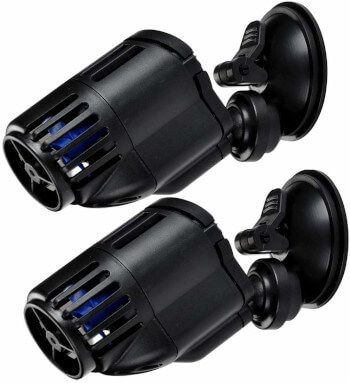
Click here to see the current price + more photos on Amazon.
The SUNSUN JVP Series Submersible Circulation Powerhead Pump is one cheap unit you should go for if you are on a really tight budget.
But as you know, cheap products come with certain limitations.
I think this is one fact that many reviewers pretend to forget when they write their very negative views about a product.
Your experience with the product should be reviewed against its price.
If you bought it cheaply but complain when it can’t last more than four years, I honestly think you are not being fair to the product, the manufacturer, and to the potential buyers who get misled by your review.
With that in mind, I want to say that SUNSUN JVP Series Submersible Pumps perfectly offer the primary functions of any other powerhead: providing strong water circulation to stir up waste, speeding up the filtration and oxygenation processes, and keeping your fish active.
It is not completely quiet and you will have to spend a little more to get silent aquarium powerheads.
But the sound is not as loud as to wake you up from your sleep.
If anything, I would describe it as a slight humming noise.
There is also no flow control switch — something that is not a big deal for some people, including me if I buy a product this cheaply.
You also can only turn the powerhead off by unplugging and there’s no shortcut around that.
I have also noticed that the cord is rather short, meaning you may need to attach it to an extension cord to get to your power.
Anyway, this powerhead is flexible, so you can easily adjust its ball joint to rotate to the direction you see dead spots.
The suction cup is also reliable in holding the unit, as long as it lasts.
Another positive thing I can add is that this unit is relatively small and takes little space in a tank, which is deeply appreciated by reef keepers who do not want to spoil the internal aesthetics of their saltwater aquarium.
Remember how you position the powerheads in your reef tank determines their efficiency, so don’t place them where they will clog easily, causing them to overheat and then malfunction.
Anyway, my opinion is that it is best you buy the SUNSUN JVP Series Circulation PumpI if you require a really cheap nano powerhead for your saltwater tank.
Advantages:- You can’t beat the price.
- The ideal purchase for a super tight budget.
- It is comparatively small, and so is not going to eat much into your fish tank’s space.
- It submerges without issues.
- Its head nozzle is flexible.
- It is compatible with both the marine and saltwater tanks.
- The short cord is a tall order for some people.
- It lacks a suitable flow control.
- Should be looked at as a short-term investment, but is still a great purchase for a very tight budget.
4. Jebao Cross Flow CP – Unobtrusive, Strong and Silent
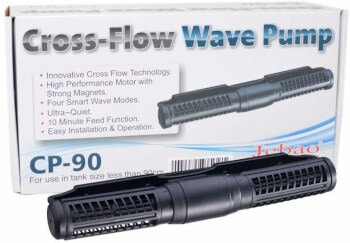
Click here to see the current price + more photos on Amazon.
The Jebao Cross Flow Wave Maker is not like the other products listed here.
It’s a gyre type of wave-making powerhead, which means that it is designed in a way to circulate the water back to itself.
With other non-gyre powerheads, you’ll need at least two units positioned at the opposing sides of the reef tank to eliminate dead spots.
With this type of wave maker, however, you only need one device and it will be enough to circulate the water in the whole saltwater aquarium, which leaves no stagnant water areas.
With this out of the way, I think it’s safe to say that the Jebao Cross Flow models listed here look deceptively modest.
However, you will be pleasantly surprised at the actual pumping power they can maintain.
These are no nano powerheads and they will definitely serve a large saltwater fish tank best.
Make sure you check my detailed suggestions below the review section for guidance on the exact CP model for your setup.
There I will make a recommendation based on reef tank size and point out where these would fit without demolishing your corals.
Anyway, the Jebao CP Series come with all the qualities one may need from a high-end aquarium powerhead.
They provide a dead silent experience, on top of enormous circulating power, that can be micromanaged through a multi-mode controller device.
The pump also seems to be extremely durable and requires cleaning roughly once a year.
The price is more than adequate for the provided quality and you can definitely view it as a long-term, low-maintenance investment.
Another thing that makes me love these units is their sleek and unobtrusive design.
They don’t look like your typical ostrich egg glued to the aquarium’s wall.
In my opinion, they make zero impact on the internal look of a reef tank, which is something I personally appreciate.
It’s worth noting that some users do report a short lifespan, however, based on my experience that is the result of either a poor shipping or human error.
Advantages:- It’s a powerhouse and it moves tons of water.
- Dead silent operation.
- Adjustable flow rate.
- Multiple modes, including a livestock feeding one.
- It comes with all the essential accessories.
- Sleek unobtrusive design that doesn’t hinder internal aquarium aesthetics.
- Gyre type powerhead, which means you don’t need multiple units to eliminate stagnant water spots.
- Durable, despite being sold in the lower price range.
- It discharges no heat.
- The power supply is not of high quality.
- The buttons on the controller can at times be problematic, but you can always ask for a replacement.
5. Uniclife W Series – The Powerhouse

The Uniclife wave maker is an excellent alternative to Hydor Koralia’s Evolution.
In terms of price-to-quality ratio, the Uniclife has a small advantage over Koralia’s Evo.
However, Uniclife has another pretty distinct edge over Koralia, although it’s kind of niche.
The Uniclife W-40 comes at a super competitive price, yet provides DOUBLE the GPH of the strongest Koralia. This makes the Uniclife one of the best options for larger reef tanks if you don’t want to break the bank while maintaining decent quality.
And one thing Uniclife’s powerheads are known for is raw power.
The way they’re designed makes for the least reduction in power. However, because of that same design, they may need cleaning every 2 to 3 months (if your tank tends to gunk up too quickly).
Anyhow, one thing some people may find irritating with this powerhead is that it can be somewhat louder in the first couple of days.
Some further research on the subject seems to indicate that the humming quiets down significantly after no more than a week of use.
Naturally, I became very invested in listening to my Uniclife powerhead after I got it. Honestly, it did seem louder at first, but the whole thing completely subsided in just about two days.
So I would not say it’s something to worry about. I’ve found this initial loudness to be common with most aquarium equipment that has rotors, especially powerheads and canister filters.
Advantages:- Very powerful. Almost too powerful
- Adjustable, which gives us some flexibility
- Almost a steal for most of the year because of a weird neverending deal on Amazon (???)
- Good design, is durable
- Multiple bells and whistles and customizability
- needs cleaning every 2 to 3 months, and probably every single month if your tank tends to get messy quickly
- may be somewhat noisy before the rotor gets used to working (only lasts a couple of days – 2 in my case)
What’s The Best Pick For The Fish Tank’s Gallon Size?
Maybe up to this point you are not quite sure which exact powerhead you should get for your particular reef tank’s size. Therefore, to go a step further, I am cutting out more fat to make the meat leaner for you by outlining a given aquarium size versus the right powerhead.
So here are the best powerhead recommendations for the gallon capacity of reef tanks:
1. Top Powerheads for a 10 Gallon Nano Tank
So here is the best powerhead for a 10-gallon nano reef tank:
Your 10-gallon nano reef tank would need a water turnover of between 20 and 40 times, depending on the coral you keep.
For an aquarium with mainly LPS corals, you should go for one unit of Hydor Koralia Nano Aquarium Circulation Pump 240 GPH. This amounts to a total of 24 times of water turnover, which for LPS corals is just about right. These units are one of the best small powerheads available for this kind of setup.
For an SPS-dominant nano reef tank, the same applies, but you’re looking to turn the total water volume up to 40 times per hour. Two units of Hydor Koralia Nano 240 GPH should do the job perfectly, keeping your SPS corals satisfied.
By getting to 480 GPH in total coming from 2 units, you will have an even flow throughout your SPS-dominate 10-gallon reef tank.
If, and only if, you don’t plan to put too much live rock in there, you can get a single Hydor Koralia rated at 425 GPH. This way, you won’t get stagnant water spots even though the flow is coming from a single source.
This section and product recommendations work even if you have a slightly larger saltwater tank such as the Fluval Evo 13.5-gallon which is a common choice nowadays.
2. Top Powerheads for 20 to 30 Gallon Tanks
Here are the best powerheads for 20 and 30-gallon reef tanks:
For a 20-30 gallon coral reef aquarium, you’d need a water turnover ranging from 400 to 1200 GPH depending on your livestock. This is following the tule that LPS corals need 20x total volume turnover, where SPS corals prefer it at a 40x multiple.
If you keep an LPS dominated reef tank that has a total water volume of 20 gallons, you can go for one unit of Hydor Koralia Nano 425 GPH or two units of Hydor Koralia Nano Aquarium Circulation Pump 240 GPH, depending on how you want to distribute the flow.
If you want it to be more evenly distributed you should use the 2 units, but if you don’t have much rockwork to block the current you can go with the stronger single powerhead.
For a larger nano reef tank of 30 gallons, that revolves around LPS corals your best bet would be to buy two Hydor Koralia Nano powerheads, rated at 240 GPH.
In the case of an SPS-dominate nano reef aquarium, you’ll need a maximum of 1,200 GPH water turnover, assuming the tank has a 30-gallon capacity.
Two units of Hydor Koralia Evolution (550 to 600 GPH) are what I consider the best powerhead recommendation here.
However, if you are on a budget, you can instead have two units of SUNSUN JVP Series Submersible 530 GPH, which are comparatively a lot cheaper.
For a 20-gallon aquarium that houses mainly SPS corals, you can definitely get away with 2x Hydor Koralia Nano, rated at 425 GPH.
This will provide enough flow for the corals to feel at home and thrive.
3. Top Powerheads for a 40 Gallon Tank
Have a peek at the best powerheads for a 40-gallon reef tank:
The best powerhead for a 40-gallon reef aquarium should be able to pump at least 800 GPH if it houses mainly LPS coral reefs. A pair of Hydor Koralia Nano (425 GPH) is the best option you can get without breaking the bank.
If it is a 40-gallon SPS coral tank, you should purchase two units of SUNSUN JVP Series Powerhead Pump 800 GPH. These two amount to 1600 GPH which satisfies the rule of 40x total aquarium water turnover.
If you can afford to spend more, go for 2x Hydor Koralia Evolution, rated at between 750 and 850 gallons per hour (visit the link to Amazon to see the exact model).
4. Top Powerheads for a 55 Gallon Tank
Here are the best powerhead options for equipping a 55-gallon reef tank:
A 55-gallon reef tank needs a water turnover of at least 20 times for LPS corals and 40 times for SPS corals.
For a reef aquarium that houses predominantly LPS corals, an ideal turnover is 1100 GPH, for which two units of Hydor Koralia Nano 565 GPH is a good match.
It is also on the cheaper side.
Alternatively, you can go for two lower-quality units of SUNSUN JVP Series and get a pack of 2 units rated at 530 GPH, which will be almost 5 times less the cost. The latter is best if you’re on a very tight budget, but want to get your LPS aquarium rolling sooner rather than later.
An SPS reef aquarium that has a total water volume of 55 gallons would require 40 times of water turnover which equals 2200 GPH.
If you should be on a budget, get for yourself two units of Hydor Koralia Evolution rated at 1050-1150 GPH. They are one of the best powerheads that are recommended for a reef tank of this size, in my experience. If you want to go super low on the budget you can just get 3x SUNSUN JVP Series that will amount to about 2400 GPH in total, with each being 800 GPH.
Take note that these recommendations will also work well for a 60-gallon cube aquarium with reef corals.
5. Top powerheads for a 75-gallon tank
Here are the powerheads that would work best in a 75-gallon reef tank:
A 75-gallon reef tank will require a turnover of between 1500 and 3000 GPH, depending on what kind of coral you keep in there.
For a reef tank with mostly LPS coral species, a pair of SUNSUN JVP Series Submersible 800 GPH is ideal and on the cheaper side. You can as well go for 2x of Hydor Koralia Evolution 750 to 850 GPH if you wish to be more generous to your aquarium. The Koralia is probably the best powerhead option for this setup if you don’t want to break the bank, without compromising with the quality.
As for the mighty 75-gallon reef tank dominated by SPS corals, you’ll want a water turnover of at least 40 times so that the corals feel comfortable. In that case, you should opt for 2 powerheads of the Hydor Koralia Evolution rated at 1500 GPH each, which is on the cheaper side.
On the other hand, you can take advantage of the Cross Flow system of Jebao and get their CP-90 model. It stands better inside of the aquarium and is not as obtrusive to the reef’s internal aesthetics. The CP-90 assumes a flow rate of between 2700 and 3300 GPH for the whole tank with a single unit. With these, you don’t need to get multiple ones to eliminate stagnant water spots. It has a controllable flow rate, so tune it down to 50%, which should be enough for this setup.
6. Top Powerheads for a 90 Gallon Tank
To get the best powerheads for a 90-gallon reef tank you can try:
The best powered for a 90-gallon reef aquarium should be capable of at least 900 GPH per unit. If the reef tank mainly has LPS corals, then the right powerheads should pump a total of 1800 GPH.
Two units of Hydor Koralia Evolution Aquarium Circulation Pump (1050-1150 GPH) can comfortably deliver that without overpowering the corals.
For an SPS type of reef tank that has a 90-gallon water capacity, the required turnover rises to 3600 GPH. SPS coral species enjoy a stronger flow or at least 40 times of water turnover per hour.
In that case, I’d recommend Uniclife’s W-40 Wave Maker. It has a maximum flowrate of 3400 GPH which should be alright for this setup. However, getting a single unit for your tank’s total flow rate is not desirable and you’d want to spread it across at least two powerheads. To avoid compromising with the GPH in that way you’d want 2x Uniclife’s W-25 wave makers, but make sure to adjust their total flow rate to not go over the desired 3600 GPH. A W-25’s maximum flow rate is 2100 GPH so you’t want to set each unit to about 85% power. That’s roughly 1785 GPH, which multiplied by two gets you pretty close to 3600.
For more options here I can also recommend getting a single gyre-type Jebao Cross Flow CP-90, rated at a total flow of between 2700 and 3300 GPH. Ramp up the settings to reach the maximum and your SPS corals will feel absolutely fantastic in your 90-gallon reef tank. The good thing about the Jebao Cross Flow models is that you only need a single unit to EVENLY circulate the whole tank’s volume.
7. Top Powerheads for a 125-Gallon Tank
Here is how to choose the best powerheads for a 125-gallon coral reef tank:
A 125-gallon reef aquarium is obviously going to need very strong powerheads. The rule for healthy flow for LPS corals states that they would need 20x of the total tank’s volume in water turnover. In an LPS-dominate 125 gallon reef tank, we are talking about 2500 GPH.
The best approach here would be to use 2 units of Hydor Koralia Evolution rated at almost 1200 GPH each if you are looking for some cheap ones. Supplement that with a third Hydor Koralia Nano 425 GPH powerhead and you’ll hit the minimum requirements of LPS corals on a budget.
Alternatively, you can go for a single Jebao Cross Flow CP-90 powerhead with a gyre circulation which will cost even less than the Koralia units. It would be best if you tune down the Jebao to the minimum, which will net you around 2700 GPH in total.
As for a 125-gallon SPS reef tank, which requires 5000 GPH of total water turnover, you should take a single Jebao Cross Flow CP-120 powerhead if you want to spend less.
The estimated flow rate of this gyre type of unit is between 4300 and 4600 GPH, which is your best option when you don’t want to spend a fortune.
Tune the Jebao at maximum power and leave it be.
However, if you are ready to pay more for the most efficient powerhead, then go for a single Maxspect XF350 Gyre Generator.
Its 5280 GPH of maximum flow rate makes it the best powerhead you can get for a 125-gallon reef aquarium dominated by SPS corals.
Make sure to tune the flow rate of your Maxspect XF350 Gyre Generator down to the needed 5000 GPH. This way you’ll get the optimal water turnover.
What’s The Best Placement For Your New Powerhead?
At times, the powerhead fails to perform efficiently, not because it is ineffective, but because you have not placed it correctly.
Therefore, no matter how expensive or powerful it is, you need to learn the art of optimal positioning.
However, there is no universally agreed position for aquarium powerheads.
Each reef tank has its unique requirements, so the placement of the current-generating unit is mainly dictated by rockwork and coral placement. For example, the sensitive Hammerhead coral does not like being placed directly in front of a strong powerhead.
Here is what to bear in mind when it comes to proper powerhead placement:
Ideally, you’d want to use 2 separate powerheads placed at the opposing ends of the aquarium. The best way to position an aquarium powerhead is near the water surface, where the currents can generate partial surface agitation preventing sand from flying around. The agitation helps to break down accumulated protein films, improves the internal shimmering effect, and helps with oxygenation.
When placing the powerheads mind that you should point them in opposite directions, in order to eliminate stagnant water spots in the aquarium. A good way to do that is by pointing one to the bottom-left and the other to the middle-right section of the water column. That’s assuming you’re standing behind each device on each side of the aquarium when directing the currents.
The filter in the tank also determines how you place the powerhead.
Since the filter also generates currents, it is better to put the powerhead far away from the area being stirred by the filter’s water flow.
FAQs
What is the recommended GPH for a reef aquarium?
Experts and experienced hobbyists have generally agreed that reef tanks with Large Polyp Stony corals benefit the most from powerheads that turn the tank’s total water capacity 20 times per hour. For tanks with mainly Small Polyp Stony corals the powerhead should be able to turn the water in the tank 40 times per hour.
Does your reef tank really need them?
Powerheads are essential in reef tanks. In the oceans where corals naturally thrive the water always flows. Stagnant water gives way to completely different ecosystems than flowing water. Inappropriate or no flow can significantly affect the health of your aquarium corals.
How many do I need for my reef tank?
The number of powerheads you put in your reef tank depends on how strong they are and how you want the water to flow. In some tanks it makes sense to have 4 powerheads in each corner which helps minimize what’s known as “dead flow” areas. In other reef tanks, one well-positioned powerhead of the gyre type could be more than enough.
How important is water flow in a reef tank?
It’s not uncommon to see your corals’ state decline despite your reef tank having the perfect water parameters to grow them. That typically happens because you did not supplement them with the right water flow. Corals have developed mechanisms to feed and reproduce in water flow because they come from the ocean where there’s almost no stagnant water. You basically can’t look after corals in a reef tank with no water flow.
My Final Thoughts
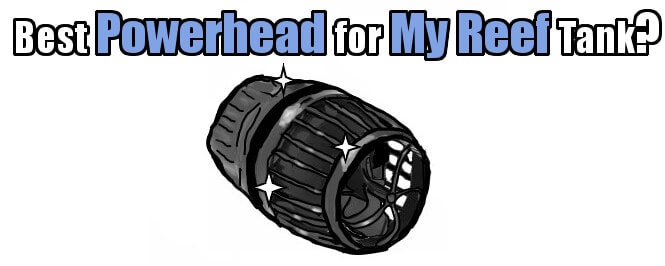
It is now between you and your saltwater aquarium, but may this article help you make changes that are going to cause your fish, coral reefs to enjoy a natural environment.
In my view, placing a suitable powerhead is one of the best decisions you can make for the general well-being of your reef tank.
As you may have also realized in the reviews, no matter how good a product is, there is always something negative about it. So just go ahead and buy what you believe is right for you based on the information you already have.
Drop me a comment below if you feel like sharing your experience with either of these units.

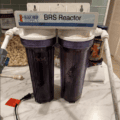


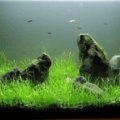
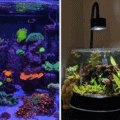
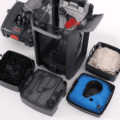
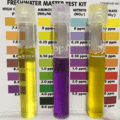

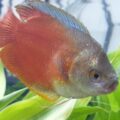
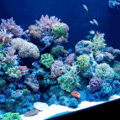
What are your thoughts for a 92 gallon corner tank. I am finding it difficult to find the right flow to keep the back rocks clean along with the right flow for the corals.
Great article. Proving once again, I don’t need a 300$ mp40. Hhahahhahaa. Thanku
Thanks Chris!
The MP40 has its advantages, but I agree that it’s not necessary for a successful reef.